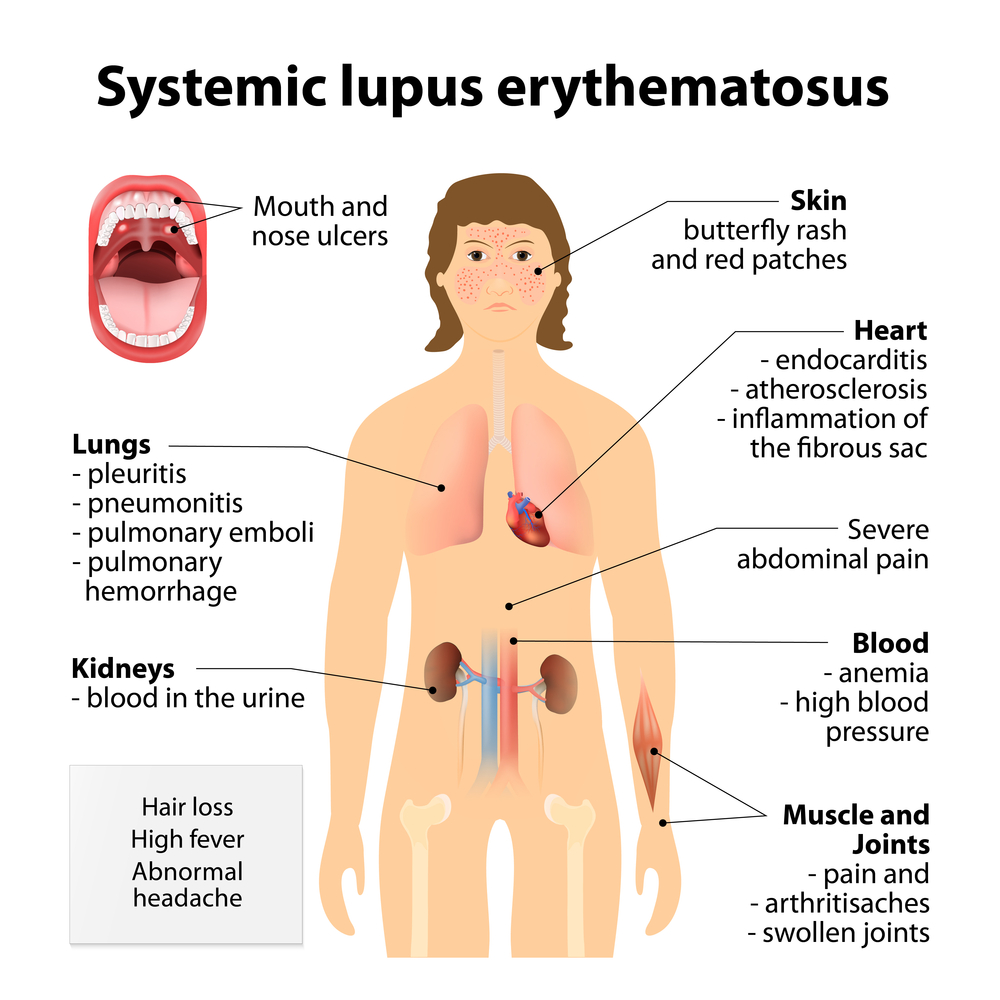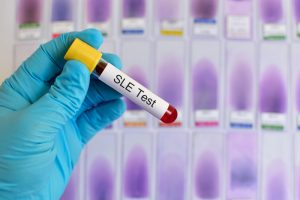What does Lupus erythematosus mean, cause, symptoms, diagnosis and treatment.
Lupus erythematosus is categorized as rheumatic condition. This disease can not only affect the skin and internal organs, but also the joints in the systematic variant. Lupus is the Latin word for wolf. And erythematos means redness. The name for this condition has not been chosen randomly. Characteristic of lupus erythematosus is red rash in the face that strongly resembles a wolf bite. The skin changes that occur in this disease were first described by French dermatologist Biett in 1828. Almost fifty years later, his colleague Kapsoi discovered that in addition to the skin, internal organs and joints may be affected by the disease.
What is lupus erythematosus?
Lupus erythematosus is an autoimmune disease. This means that the immune system is disrupted. In a normal situation, this system protects your body from harmful intruders, such as viruses and bacteria. Due to an immunological disorder, the immune system may also turn against healthy cells of your body. It’s going to attack rather than protect. Women in particular can be affected by Lupus erythematosus. The problems usually start between the 20th and 40th year of life. This condition occurs in several forms. Cutaneous Lupus Erythematosus (CLE) only affects the skin and Systematic Lupus Erythematosus (SLE) causes problems to all kinds of internal organs and joints. Drug Induced Lupus Erythematosus (DILE) may occur when using certain medicines. The symptoms usually disappear naturally when medication is stopped.
What is the cause of lupus erythematosus?
It is not known why the immune system in this disorder gets derailed. It is well known that lupus erythematosus occurs in some families more often. Heredity therefore plays a role. Some researchers believe that this disease is caused by a virus infection. Lupus is accompanied by many flu-like phenomena. In The Netherlands, approximately 1 in 4000 people suffers from lupus erythematosus. It occurs nine times more often in women than in men. An explanation has now been found. It appears that female hormones promote the disease while male hormones provide proper protection against this disease.
What are the symptoms of lupus erythematosus?
In this condition, virtually every organ of your body can be involved. Therefore, the patient’s symptoms vary greatly from patient to patient. These symptoms are most common with lupus erythematosus:
- Fatigue
- Slothiness
- Fever
- Joint inflammationJoint pain
- Skin disorders
- Renal inflammation
- Heart and lung disorders
- Phenomenon of Raynaud
- Neurological complaints
- Dry eyes
- Thrombosis
- Weight loss
- Hypersensitivity to sunlight
- Sores in mouth, throat and nasal cavity
Of course, not every patient is faced with all of these phenomena. In addition, one person is more suffering from complaints than the other. Lupus erythematosus is characterized by less active periods and active periods. The latter are called ‘flames’ or exacerbations.
What is Systematic Lupus Erythematosus (SLE)?
Because this variant of lupus is associated with rheumatic symptoms, we are investigating this condition more deeply. You will be faced with many phenomena from the above summary, including skin problems, fever, weight loss and fatigue. In addition, internal organs may also be affected, such as heart, lungs, kidneys, mucous membranes, brain and nervous system. Characteristic of systemic lupus erythematosus is that you usually also suffer from your joints. It may include joint pain without inflammation (arthralgia) and joint inflammation (osteoarthritis). In the latter case, the joints do not only hurt but they are also stiff, swollen and warm. Usually, joints are not damaged by systemic lupus erythematosus.
How is lupus erythematosus diagnosed?
In 1948, Dr. Malcolm Hargraves discovered a ‘lupus cell type’, which is present in the body of many patients. Based on his discovery, he developed a blood test that could demonstrate the presence of this lupus cell. However, since 1954 this test is no longer used. Various unusual proteins or autoantibodies associated with lupus are better indicators. As a result, the disease can now be diagnosed more easily.
Your doctor will first conduct a physical examination. He will look at the well-known phenomena of lupus, such as skin abnormalities, sore throats, sore joints, noise of the heart and lungs and an enlarged liver or spleen. Using a blood test, he can determine if there are auto-antibodies which may indicate lupus. In addition, these tests give him more information about the condition of your kidneys, liver and the presence of inflammatory substances. A urine examination can indicate whether your kidneys are inflamed. Sometimes additional research is needed to diagnose. That can be an X-ray of the lungs or a heart film (electrocardiogram or ECG) when you have heart problems. Your doctor may also decide to remove a piece of tissue from your skin or kidney with a hollow needle under local anesthesia (biopsy). Under a microscope, he can see if you actually have this condition.
How is lupus erythematosus treated?
Cutane and Systematic lupus cannot be cured.
That is however true for Drug Induced Lupus. When the patient stops to take the drug that caused the symptoms, the disease usually resumes.
In the case of systemic lupus erythematosus, the rheumatologist is usually your main therapist. With regard to some symptoms, he can recommend other specialists, such as a neurologist, dermatologist or kidney specialist. For painful and inflamed joints, your doctor will first prescribe a simple pain reliever as paracetamol. If this does not work properly, you can have an anti-inflammatory analgesic (NSAID). These medicines can not only cause gastrointestinal complaints, but may also cause severe hypersensitivity problems with lupus. Liquid Green-lipped mussel with Bio-Curcumin and Blackcurrant leaf might be a good alternative. This is a natural anti-inflammatory compound, which has not yet shown any side effects. However, there are no positive or negative experiences known about this natural remedy in lupus, but please let us know if you have experience with this.
If joint inflammation is very severe, your doctor may prescribe a classical rheumatoid inhibitor (DMARD). This drug suppresses the immune system and causes inflammation in the joints to decrease.

Share this page
Tweet

Download for free the booklet ‘Moving without pain’ with a retail value of $6.75 / £4.95.
Any questions? Please feel free to contact us. Contact us.







